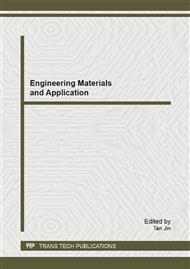p.505
p.511
p.517
p.525
p.530
p.538
p.543
p.548
p.553
Application of a Newly Developed Thermally Induced Volumetric Error Compensation Model in Improving Dimensional Accuracy of Parts
Abstract:
The thermally induced volumetric error of a machine tool has been recognised as a major contributor to the dimensional and geometric errors of component parts produced by that tool. Therefore, considerable research has focused on ways to compensate for this type of error. The traditional model of compensation for the thermally induced volumetric error of a three-axis machine tool requires the measurement of 21 geometric error components and their variations with temperature, which is difficult and time-consuming to conduct. In our previous research, we developed a simplified and economical method of compensation of thermally induced volumetric error by modeling the positioning error as functions of ball-screw nut temperature and travel distance. This paper describes the application of this newly developed compensation model in improving the dimensional accuracy of parts. The model was applied to reduce the positioning error of a number of drilled holes. The results showed an average reduction of absolute and relative errors by 30.44 μm and 77%, respectively.
Info:
Periodical:
Pages:
530-537
Citation:
Online since:
January 2013
Authors:
Price:
Сopyright:
© 2013 Trans Tech Publications Ltd. All Rights Reserved
Share:
Citation:


